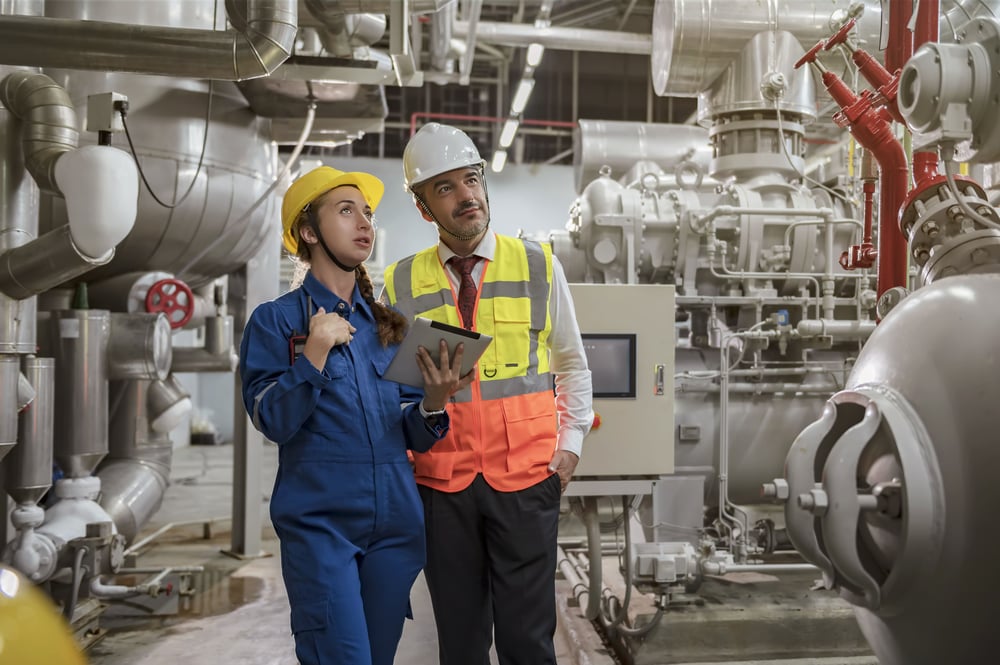As a facility manager, you need to take on several challenges and responsibilities every single day for as long as you hold the role. While there are certain challenges that the managers can plan for, many will strike them out of the blue. You aren’t prepared for these challenges, yet you must keep the place running smoothly, safely, and within budget. Security and facility management is required for this very purpose.
Today, more and more companies are recognizing the challenges facing facility management and are taking measures to overcome them. One of them is the use of a computerized maintenance management system (CMMS) to automate maintenance-related tasks that cut into a company’s profits when performed manually. The following are some of the ways CMMS streamlines workflows in facility maintenance to improve facility and company profits.
1. Prevent Equipment Failure
When machinery or facility systems fail, manufacturers lose production time, which results in additional labor/overtime, possibly late delivery, and higher replacement parts costs. Repairs can be conducted before the unit malfunctions by utilizing a CMMS to detect equipment that requires more frequent parts replacement and setting up a preventive maintenance program.
When system failures occur, the CMMS will record reliable, timely information from work orders, showing the real-world requirements. A CMMS can compile work order data into a summary report, guide Preventative Maintenance schedules, and guarantee assets are inspected before they fail. All of this can help to avoid unnecessary costs, thus increasing profitability.

2. Simplify Record Keeping
You will be able to quickly determine the cost of spare parts used in maintenance if you're using a CMMS for inventory management and will be able to run reports to further evaluate this data. This improves the ordering and use of parts. Maintenance and repair monitoring using CMMS also streamlines the record-keeping process for audit purposes by consolidating these vital materials in one location.
3. Streamline Repair Communications
Maintenance efficiency is aided by seamless interaction between members of staff who issue tickets and the maintenance crew that responds to those reports.
Automating the repair process using CMMS helps eliminate misplaced or difficult-to-read notes written by hand, a cascade of redundant e-mails that must be retyped into CMMS, and continual disruptions from radio calls or hallway contacts with personnel reporting on the status of repairs.
Additionally, responsibilities such as monitoring duplicate requests, obtaining required supervisor permission, and other aspects of the request process can be automated.
Maintenance tickets are automatically transferred to the most relevant technician with CMMS. Once the service request is met and the machine is up and running, a work order is generated by the work order software for the technician to complete.
In this way, CMMS saves time and energy for employees by keeping everyone in the loop and allowing them to keep track of repair progress. In addition, the automated method defines which professional is responding to the request and eliminates any ambiguity about when the issue will be fixed.
4. Facilitate Preventive Maintenance Management
Your CMMS will use the data it collects regarding maintenance, repairs, and inventory utilization to forecast when maintenance tasks should be completed. Data-driven manufacturers prefer this method because it notifies maintenance staff of potential problems before they occur.
As a result, there is less unexpected downtime and maintenance that solves actual issues rather than simply taking it on a predetermined schedule, whether or not it is required.

5. Ensure Regulatory Compliance
The cost of fines imposed by regulatory authorities is one maintenance headache—and cost—that every facility manager wants to avoid. In several ways, CMMS considerably reduces this problem. Also, because much of the information required for compliance is already stored in the CMMS system, there is no need to keep duplicate records.
To meet safety and environmental requirements, as well as equipment insurance policies, managers utilize CMMS to automate the process of creating, scheduling and performing preventive maintenance and tasks related to the work order.
A CMMS system's automated PM system can look up historical work orders and associated data of an asset quickly and accurately and provide a report that will satisfy regulatory agencies, helping you avoid fines that can increase costs and cut into profits.
Final Word
These five cost-cutting features show how a CMMS can quickly pay for itself and improve maintenance operations in ways that go far beyond merely recording daily work orders.
Maintenance Care, a leader in maintenance software, employs interactive and powerful technology to improve uptime, increase production efficiency, and boost productivity. It enables you to reap the aforementioned benefits and more. Get in touch with us today to know more about how our CMMS solution helps streamline workflows in facility maintenance to improve profits.









